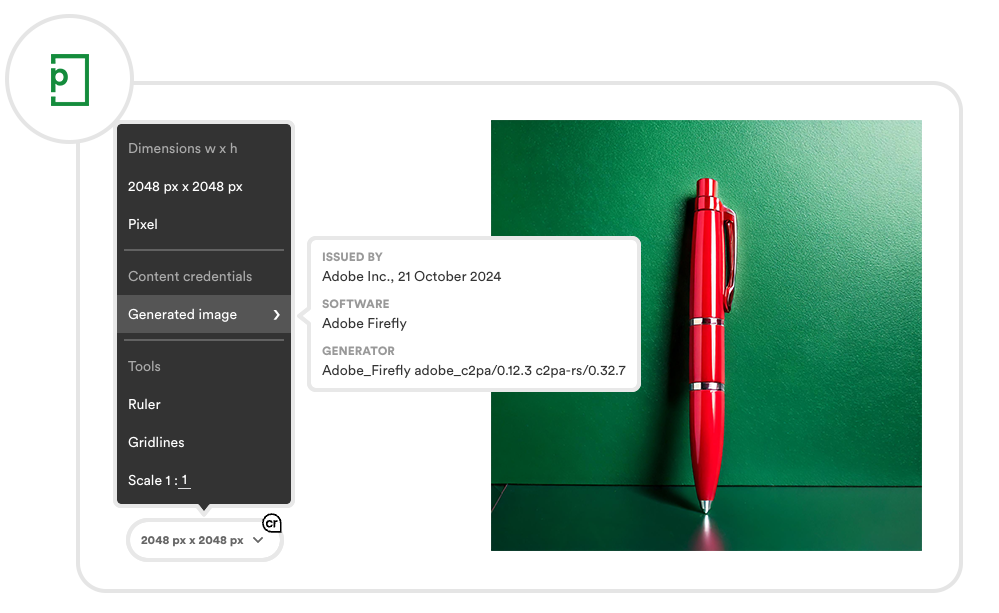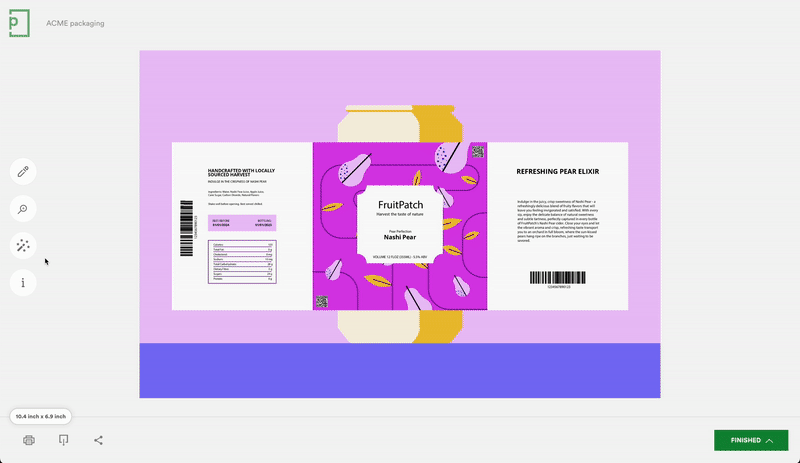How PageProof helps reviewers make decisions with Content Credentials

It was the 90s in Auckland, New Zealand, and Marcus Radich was a finished artist and retoucher working on a layout for a client. He was on deadline — the printing press needed to receive the final artwork on time or his company would be billed, whether or not the work was printed. But his client needed to approve the design before it could go to print, and they were located across town.
“In those days, we would have a physical printed proof that we’d roll up and put in a tube,” said Radich. “A bicycle courier would bike across town to give it to the client, who would then draw on it, roll it back up, and send it back to us by courier. That was the process, so if you went through several rounds of changes, that took several days.”
The proofing and review process has come a long way since then. Today, Radich is the CTO and co-founder of PageProof, an online platform for marketing and creative teams to gather feedback and approvals on creative assets. It first launched in 1999 with support for PDFs and images. In 2005, PageProof became the first platform to introduce video proofing, making it possible to review and approve TV commercials seamlessly. By 2014, PageProof’s mission was to support every type of creative content produced: images, videos, audio files, websites, emails, documents, presentations, and more. Now, PageProof is continuing to stay ahead of the curve by being the first product of its kind to implement Content Credentials — the open-source standard developed by the C2PA, a standards organization co-founded by Adobe.
“Content Credentials are really important for us because everybody in the market is adding AI-generated content to everything, and stakeholders want to know where things came from,” said Radich. “We don't have a bias one way or another. We don't say that AI is good or bad. We just say, ‘Here is the origin of the work,’ and reviewers can decide how they want to use that information. They are empowered to make decisions.”
Given that PageProof’s thousands of customers include some of the largest companies in the world, those decisions can really matter. We spoke with Radich about PageProof’s implementation journey and how Content Credentials help increase transparency and trust in the content review process.
This interview has been edited for length and clarity.
What tools are available for reviewers to use in PageProof?
We’ve focused on helping reviewers check everything they need to on a proof to meet brand guidelines and ensure it’s error-free. We offer specialized tools like a Compare mode to check changes that have been made; ColorSep® to view color separation plates for print production; an automatic barcode scanner; checklists to ensure brand standards have been adhered to; and PageProof intelligence™ Smart Check, which displays fonts, colors, color profile, linked assets — and now Content Credentials.
Corporate marketers and creative designers appreciate how PageProof simplifies reviews, saving time and effort by integrating with tools like Adobe Creative Cloud and project management systems and helping teams hit deadlines with all approvals in place.
What motivated you to implement Content Credentials?
As pioneers in online proofing, we’re always focused on delivering tools that enhance the review process, ensuring our reviewers gain greater depth and clarity in their assessments. Our mission is to continuously innovate and introduce functionality that adds value to the feedback journey.
That’s where Content Credentials come in. This feature aligns seamlessly with our vision, offering transparency just as AI-generated content becomes a mainstream part of creative workflows. In today’s landscape, where the authenticity and origins of content matter more than ever, the timing couldn’t be better.
Our position within the creative workflow makes us uniquely suited to bring Content Credentials to the surface, empowering reviewers to make informed decisions. With this addition, we're not just keeping pace with industry changes — we’re leading the way by providing the tools needed to maintain trust and clarity in the evolving content landscape.
Watch this video to see how Content Credentials are revealed to reviewers in PageProof through its Smart Check feature.
What file formats are supported in PageProof’s Smart Check feature that reveals Content Credentials?
The Smart Check: Content Credentials feature supports image formats such as JPEG, PNG, TIFF, DNG, WebP, PDF, and audio formats such as MP3 and WAV. Support for video formats is on the roadmap, and we’ll likely build out more features for PDF.
PageProof has an automated barcode scanner which spotlights barcodes and QR codes, How does this work?
The barcode feature in PageProof is an example of how our content spotlight feature works. It automatically searches through the proof to locate and highlight barcodes and QR codes, then it analyzes them to present details. We are looking to bring this content highlight feature to search within a PDF and locate and highlight assets and their Content Credentials in the future.
Today, PageProof’s PDF engine for online proofing can detect whether content with Credentials has been placed into the PDF — for example, a PDF created from Adobe InDesign with several assets placed into the layout — and then surface this information to the reviewer. We have plans on our roadmap to locate and highlight the assets with their Content Credentials.

The barcode feature allows reviewers to locate and analyze barcodes and QR codes.
Which Content Authenticity Initiative (CAI) open-source tools did you use?
We used the C2PA tool to extract the manifest from the asset or read it from the web. Then, we use our own library to read this manifest file and display the credentials in a human-readable format for reviewers.
What challenges, if any, did you encounter while implementing Content Credentials?
The PageProof file support architecture is extremely extensible — so using the C2PA open-source tools didn't present us with too much of a challenge. If anything, the challenge was in taking the manifest file containing the Content Credential information and separating out the technical details from the human-readable content.
Can you share a moment when you realized that PageProof was really making a difference in the world?
We have thousands of customers all over the globe, and they’re some of the biggest brands in the world. These companies are using PageProof to review and approve all of their work. As a founder, when you actually see the work out there, and you know it went through a PageProof approval process, that's a pretty amazing feeling.